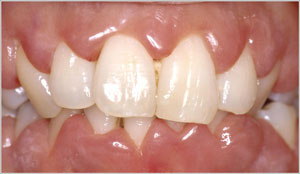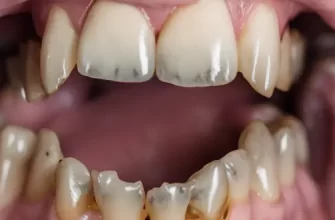Have you ever looked in the mirror and wondered why your teeth aren’t perfectly straight? Crooked teeth, or malocclusion, affect millions of people worldwide, leading not only to aesthetic concerns but also to potential health issues.
Cost Comparison of Teeth Straightening Treatments (Average in USD)
This chart compares the average costs of different teeth straightening treatments. Traditional metal braces are the most affordable, while lingual braces and surgical procedures tend to be the most expensive.
Whether it’s difficulty chewing, jaw pain, or a lack of confidence in your smile, misaligned teeth can have a significant impact on your daily life. But why do some people develop crooked teeth while others have naturally straight smiles? And what are the best modern solutions for correcting them? In this guide, we’ll explore the causes, risks, and cutting-edge treatments that can help you achieve a healthier, more confident smile.
Why Do Teeth Grow Crooked?

Crooked teeth, medically known as malocclusion, occur due to a variety of reasons. Genetics is the most common factor, meaning if parents have misaligned teeth, their children are more likely to develop the same condition. Other causes include:
- Jaw Size: Some individuals naturally have smaller jaws, which can result in less space for teeth to grow properly, leading to misalignment. When teeth do not have enough room to emerge correctly, they may grow at odd angles or overlap with each other. This can create bite problems, uneven pressure on certain teeth, and potential jaw discomfort over time. In some cases, patients with small jaws may also experience difficulty chewing properly, which can further impact digestion and overall oral health.
- Thumb-Sucking & Pacifier Use: Prolonged habits can push teeth out of alignment. Children who persist with thumb-sucking beyond the age of three may exert continuous pressure on their developing teeth, causing the front teeth to tilt outward. This condition, known as an open bite, makes it difficult for the upper and lower teeth to meet properly, potentially leading to speech difficulties and eating challenges. Even pacifier use, if extended beyond infancy, can create similar alignment issues that require orthodontic correction.
- Mouth Breathing: Chronic mouth breathing, often caused by nasal issues, can influence jaw and teeth development. When a child breathes through their mouth instead of their nose, it can affect the natural positioning of the tongue, which plays a crucial role in guiding jaw growth. Over time, this can lead to narrow dental arches, protruding teeth, and an improper bite. Studies have shown that untreated mouth breathing may also contribute to long-term facial structure changes, requiring more extensive orthodontic intervention later in life.
- Early Tooth Loss: When baby teeth fall out too soon, adjacent teeth may shift, leading to misalignment. Baby teeth serve as natural placeholders for permanent teeth, ensuring they erupt in the correct position. If a child loses a baby tooth prematurely due to decay, injury, or extraction, the neighboring teeth may drift into the empty space, causing crowding or improper alignment when the permanent tooth emerges. Dentists often recommend space maintainers in such cases to prevent unwanted tooth movement and maintain proper spacing.
- Trauma or Injury: A blow to the face can alter the alignment of teeth and jaw. Sports injuries, accidents, or falls can knock teeth out of place or even fracture the jaw, affecting how teeth fit together. In severe cases, trauma can cause a shift in the entire bite, leading to discomfort, uneven wear on teeth, and even temporomandibular joint (TMJ) problems. Prompt dental intervention, including braces or surgery, may be necessary to correct the misalignment and restore proper function.
Common Causes of Crooked Teeth
| Cause | Prevalence (%) |
|---|---|
| Genetics | 40% |
| Early Tooth Loss | 20% |
| Poor Oral Habits | 15% |
| Jaw Size | 10% |
| Facial Injury | 10% |
| Malnutrition | 5% |
This chart highlights the common causes of crooked teeth. Genetic factors play the largest role, while early tooth loss and poor oral habits also contribute significantly. Other factors, such as jaw size, facial injuries, and malnutrition, have a lesser but notable impact.
Problems Associated with Crooked Teeth
Crooked teeth are more than just a cosmetic issue. They can cause:
- Difficulty Chewing and Speaking: Severe misalignment can make eating and speech challenging.
- Increased Risk of Cavities & Gum Disease: Overlapping teeth are harder to clean, leading to plaque buildup.
- Jaw Pain & TMJ Disorders: Poor alignment can stress the jaw joints, causing discomfort or disorders like temporomandibular joint (TMJ) dysfunction.
- Lower Self-Confidence: Many people feel self-conscious about their smile, affecting social interactions and self-esteem.
Diagnosing Crooked Teeth
A dentist or orthodontist will typically diagnose malocclusion through:
- Visual Examination – Initial assessment of alignment and bite.
- X-rays – Provides detailed images of teeth positioning and jawbone structure (Accuracy: 9/10, Cost: $100–$250).
- 3D Scanning & Digital Impressions – More precise than traditional molds, used for treatment planning (Accuracy: 10/10, Cost: $200–$400).
- Cephalometric Analysis – Specialized X-ray to measure jaw and teeth angles (Accuracy: 8.5/10, Cost: $150–$300).

Modern Treatments for Crooked Teeth
1. Clear Aligners (Invisalign, ClearCorrect)
Process: The patient starts with a 3D scan of their teeth, followed by a series of custom-made transparent trays that gradually shift the teeth into place. New trays are provided every 1–2 weeks. Since they are removable, they allow for easier eating and cleaning.
- Effectiveness: 8.5/10 (best for mild to moderate misalignment).
- Treatment time: 6–24 months.
- Cost: $3,000–$8,000.
2. Traditional Braces (Metal or Ceramic)
Process: Metal or ceramic brackets are bonded to the teeth and connected by wires that exert gentle pressure to shift the teeth into alignment. Patients visit the orthodontist every 4–6 weeks for adjustments.
- Effectiveness: 9.5/10 (suitable for all cases, including severe misalignment).
- Treatment time: 1–3 years.
- Cost: $3,000–$7,000.
3. Lingual Braces
Process: Similar to traditional braces, but these are placed on the back of the teeth, making them virtually invisible. They require more precise adjustments and may cause more initial discomfort.
- Effectiveness: 9/10 (works for most cases but harder to clean).
- Treatment time: 1.5–3 years.
- Cost: $5,000–$13,000.
4. Dental Veneers
Process: Veneers are thin porcelain or composite shells that are bonded to the front of the teeth to improve their appearance. They don’t move teeth but mask minor misalignment.
- Effectiveness: 6/10 (purely cosmetic, not for functional corrections).
- Cost: $900–$2,500 per tooth.
5. Orthognathic Surgery (for severe jaw misalignment)
Process: Surgery is performed under general anesthesia to reposition the upper or lower jaw. Post-surgical orthodontic treatment is usually required. Recovery takes weeks to months.
- Effectiveness: 10/10 (best for extreme misalignment cases).
- Cost: $15,000–$40,000.
Most Popular Treatments for Crooked Teeth
| Treatment | Popularity (%) |
|---|---|
| Braces | 50% |
| Clear Aligners | 30% |
| Veneers | 10% |
| Jaw Surgery | 5% |
| Retainers | 5% |
This chart highlights the most popular treatments for crooked teeth. Braces remain the most widely used option, followed by clear aligners. Other treatments, such as veneers, jaw surgery, and retainers, are less common but still viable alternatives.
Editorial Advice
Reyus Mammadli, healthcare advisor, emphasizes that early intervention is key to preventing severe malocclusion. “If parents notice alignment issues in their child’s teeth, an orthodontic consultation by age 7 is recommended. Early treatment can prevent costly and lengthy corrections later in life.”
For adults, clear aligners provide an excellent discreet solution. However, those with severe cases should explore traditional braces or even surgery if necessary. Proper oral hygiene and routine dental check-ups remain essential, regardless of the treatment method chosen.
References
- American Association of Orthodontists (AAO) – Causes & treatments for malocclusion.
- Journal of Clinical Orthodontics (JCO) – Effectiveness of aligners & braces.
- National Institute of Dental and Craniofacial Research (NIDCR) – Genetic factors & jaw development.
- American Dental Association (ADA) – Orthodontic treatments & hygiene.
- Mayo Clinic – TMJ disorders & jaw issues.
- Invisalign, SmileDirectClub – AI-driven treatment & 3D aligners.
- Harvard School of Dental Medicine – Mouth breathing & facial development.
- New England Journal of Medicine – U.S. orthodontic clinics & real cases.








